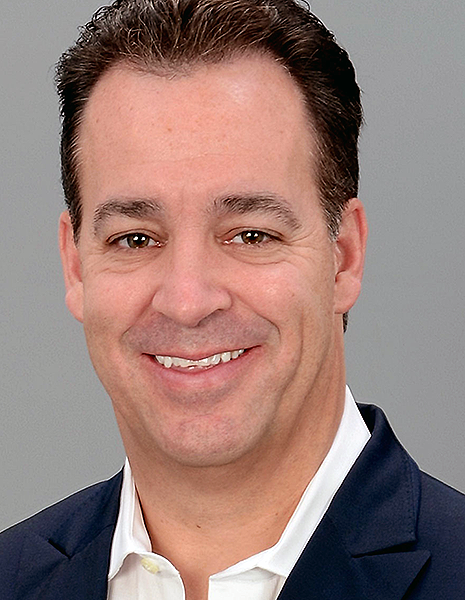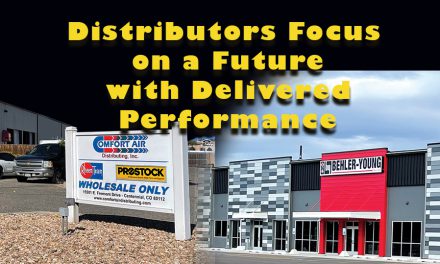
Drew Cameron
The year was 1990 in my family contractor business. The union was picketing our offices and commercial jobsites. We were ‘cash-on-delivery’ with all our suppliers and manufacturers. Two builders went bankrupt and stiffed us for over $500K in receivables. The general manager made a bone-headed accounting error on work-in-progress billing that inflated sales by almost half a million dollars (fictitiously). The Yellow Pages did not print our ads in 5 of the 9 books in which advertised. My mom hit my dad with divorce papers. And, the family dog of 17 years, a little Yorkshire Terrier named Cuddles, died.
Not to mention that my father signed personal financial guarantees with everyone to keep the doors open. By all measures we were on the brink of bankruptcy ‘ something our competition were sure to share with every homeowner we mutually encountered.
In contrast, by December of 1996, we turned a $6.5 million-dollar company (mostly residential new construction) earning 4% net profit, into a replacement, service, and indoor air quality business. We were now generating $8.0 million at 22% net profit and my father sold the company to a local utility company and retired shortly thereafter a wealthy and happy man.
So How Did We Do It?
We shifted our mix of business from low-profit, slow pay, RNC work to mostly replacement, ductwork, and indoor air quality sales. This carried high margins and immediate cash flow. Let me share with you one of the ways that had the biggest impact by far.
In my 28 years in the home services business working with contractors of all trades across North America, I witnessed them struggle with the same challenges we experienced. Key among them — low-priced competitors who undercut good companies that quote the right scope of work for the right price. Of course, there are also always those homeowners who object to price, who don’t understand perceived value and affordability.
In my never-ending commitment to help contractors change paradigms, destroy self-limiting beliefs, challenge industry precepts, shatter expectations, create extraordinary experiences, and raise the level of performance, I found one of the most effective tools to deal with contractors’ struggles is LEVERAGE!
Think about this:
- What do QVC, Best Buy, appliance retailers, and the most successful realtors, furniture and car salespeople, and ultra-successful in-home salespeople have in common?
- How can you effectively and ethically eliminate competition on every job?
- How do you offer customers the highest level of service and earning what you are worth, while the customer gets what they pay for?
- What can you offer today’s consumer that almost guarantees they buy from you?
- In 1990, what did an almost-bankrupt-contractor use to reverse their misfortunes?
The answer is leverage.

What is Leverage?
BusinessDictionary.com defines leverage as: The ability to influence a system, or an environment, in a way that multiplies the outcome of one’s efforts without a corresponding increase in the consumption of resources. In other words, leverage is the advantageous condition of having a relatively small amount of cost yield a relatively high level of returns.
Most contractors refer to this as consumer financing. To that I say: ‘Quit dropping the ‘F-bomb’ in the home!? Don’t talk about what it is, talk what it does. I call financing: ?A convenient and flexible investment plan that makes buying what you want TODAY easy and affordable, which allows energy and repair cost savings to pay for, or offset, the investment.’
Providing resources for your customers to borrow money to do business with you creates money flexibility or options, much like a mortgage does for homebuyers. The problem is that 95% of contractors use this resource ineffectively or incorrectly by: (1) Not offering payment options to EVERY CUSTOMER EVERY TIME; (2) Not offering multiple options; (3) Offering it in a Reactionary fashion to the following:
- Customer’s price/perceived value objection (total price or versus another option)
- Customer’s perceived affordability objection
- Competitor’s lower price
- Customer’s inquiry about other solutions.
Use Leverage Correctly
When used correctly, leverage is the most effective way to share your investment options with customers. It shows customers how easy and affordable doing business with you is, especially if/when you are higher-priced (differently priced) than your competition. In fact, leverage can render customer price, perceived value, and affordability objections neutral. And, using leverage requires no additional investment in marketing and lead generation.
This is great news for Performance-Based Contractors. You’re pricing is not thousands of dollars more than a traditional contractor. You are thousands of dollars different than low-priced competitors who want to sell products not solve problems.
When you quote your solutions with low monthly payments paid for or offset by energy, repair, and premature replacement costs, you show customers how they benefit from a home that is safer, healthier, and more comfortable. All that for just a few dollars more a month than cheaper purchases.
This is even better news for performance-based contractors who believe homeowners are sensitive to price. According to CNN Money: ?75% of U.S. households live paycheck to paycheck?. The problem is these people suffer from ‘cash separation anxiety? and prefer to pay monthly for items that pay for themselves. However, most contractors quote solutions based on the total investment rather than a small monthly expense comparable to other monthly expenses customers regularly pay.
Types of Buyers
Most of today’s homeowner consumers are payment customers, not cash buyers. Let’s take a brief look at the various types of buyers:
- Cash Buyers – They have the cash and can and will pay upon completion.
- Cautious Buyers ? They have the cash but are hesitant to write a big check.
- P.M. Buyers (Other People’s Money) ? They may or may not have the cash, but like options with no money down and 0% or deferred interest and/or payments. They may use credit cards to get points, miles, or cash back.
- Payment Buyers ? They want or need the lowest monthly payment to pull the trigger.
- Credit-Challenged ? Don’t forget the 30-40% of applications that can’t be approved by ‘A’ paper lenders. These people want to buy and understand their monthly payment may be a little higher than they hoped but will act if their desire or need is met.
To meet market demands, performance-based contractors need to offer a variety of payment options:
- Secured and unsecured loans with long terms
- Low-rate long-term options
- 0% APR or deferred interest and/or payments
- Plans for the credit-challenged.
By the way ‘ you should offer all these plans to all your customers.
 What Does Leverage Do?
What Does Leverage Do?
Remember: The only ways to increase sales are: (1) Run more leads (more time and marketing dollars); (2) Close more leads; (3) Increase average sale; (4) Increase frequency of sale (repeat business); (5) Generate more referrals who purchase.
Execute one of these measures and you can increase sales, profits, and personal income marginally. Execute two measures to yield geometric growth. Execute 3 or more initiatives and you’ll experience an exponential explosion in sales, profits, and personal income much like my company did in the 1990s.
This is the leverage I am talking about. It allows you to compound time and money for the mutual benefit of the customer, your company, co-workers, salesperson, and owners without increasing expenses (any dealer cost is absorbed in the overhead and paid for by the customer). You can achieve exponential results.
Leverage will help you improve low closing ratios, increase average sales and profits, stop you from losing jobs to lower-priced/lower-value companies; increase customer perceived value, perceived affordability; give customers access to money; and increase a salesperson’s and the business owner’s personal income. Leverage also offers greater customer happiness and co-worker satisfaction with the company’s ability to deliver a better all-around experience for everyone it serves and employs.
The Rule of More
Leverage is the secret to putting a tourniquet on losing sales to lower-priced low-value competitors that don’t solve the customer’s problems or address their concerns. You can stop leads from being burned and put an end to wasting marketing dollars to create leads you don’t close. Leverage is the magic that leads to opportunity maximization.
LEVERAGE is the key to help companies generate MORE!
I am talking about a lot of ‘MORE!?
- MORE opportunities created and converted
- MORE money MORE often, for MORE profit, MORE effectively, and MORE efficiently than anyone else.
- The result is MORE customer happiness and co-worker satisfaction making you the most reviewed, highly respected, regularly recommended, and graciously referred companies in your market. This will also make your company one of the most sought-after employers of choice.
BOTTOM LINE: MORE juice for the squeeze and MORE bang for the buck.
Update Your Thinking
In 1937 Frank Bettger famously wrote in his book ‘How I Raised Myself from Failure to Success In Selling?: ‘When you show a man what he wants he will move heaven and earth to get it.’
I have updated his thinking to using payment options to help consumers buy what they want: ‘Show people what they want most, why they shouldn’t be without it, how they can afford it, how they can pay for it, and they will buy it?FROM YOU!’
In a subsequent article I will share the specific strategies, techniques, and language we teach our client’s to effectively use leverage payment options to yield record performance. We’ll provide sales performance expectations, KPIs, and specific lending resources.
Live life by the drop! Experience greatness.
Drew Cameron is an advisor to Home Services Contractors and is president of both HVAC Sellutions and Energy Design Systems, Inc. The latter is an industry alliance that provides leading edge technology with complementary marketing and sales consultative support, recruiting, training, and coaching for performance and profit enhancement. Drew is an industry recognized author, speaker, educator, coach, consultant, software developer, philanthropist, and an International Consultant Award Winner. He is also a president of the Ron Cameron Foundation; Board member, Foundation Board Trustee, and a Contractor University Founder & Faculty member for Electric & Gas industries Association (EGIA); and an Air Conditioning Contractors of America (ACCA) member. Contact Drew @ 610-745-7020 drew@hvacsellutions.com.





![High Performance Contracting: Summit 2018 Panel Discussion on Implementation [PART 1]](https://hvactoday.com/wp-content/uploads/2018/06/DSC_0613-Panel-Discussion-4c3-440x264.jpg)







Recent Comments